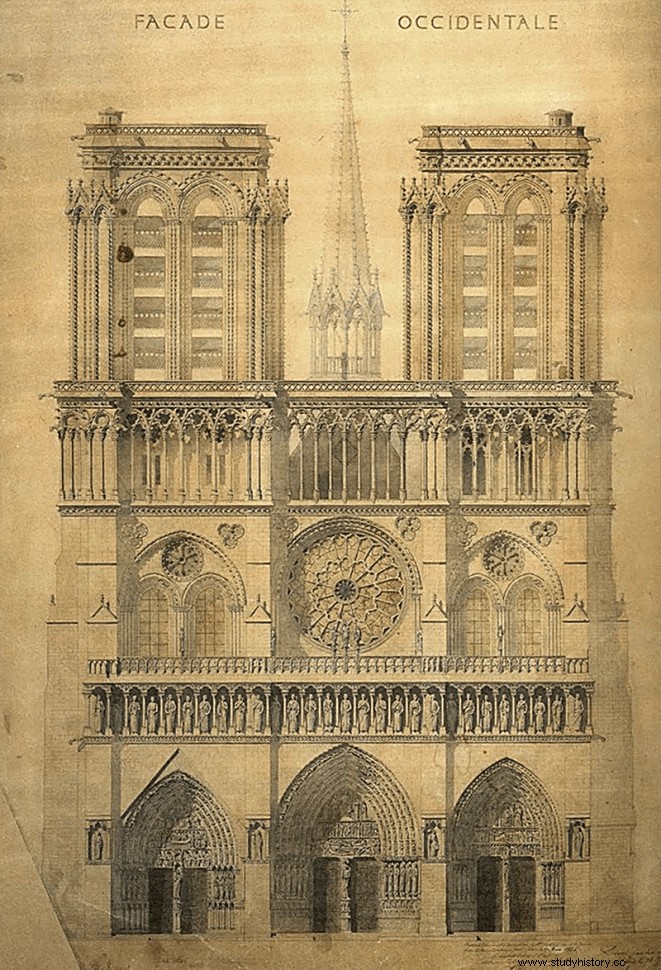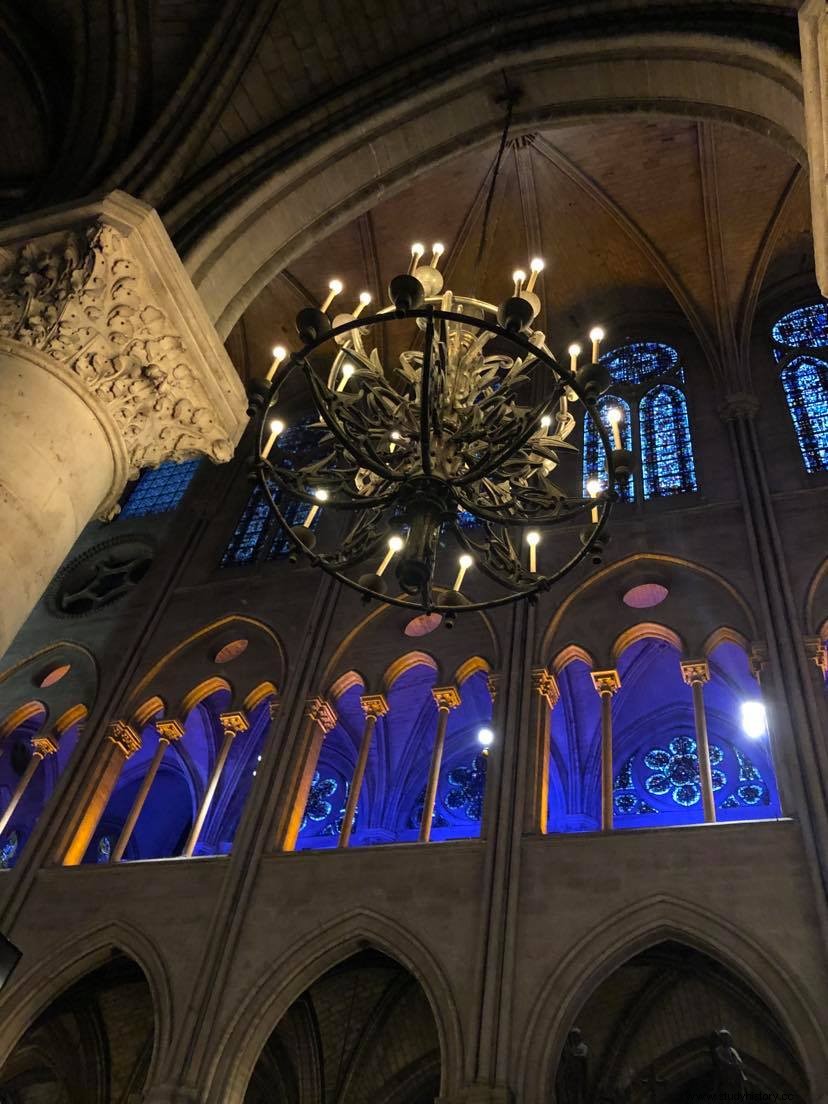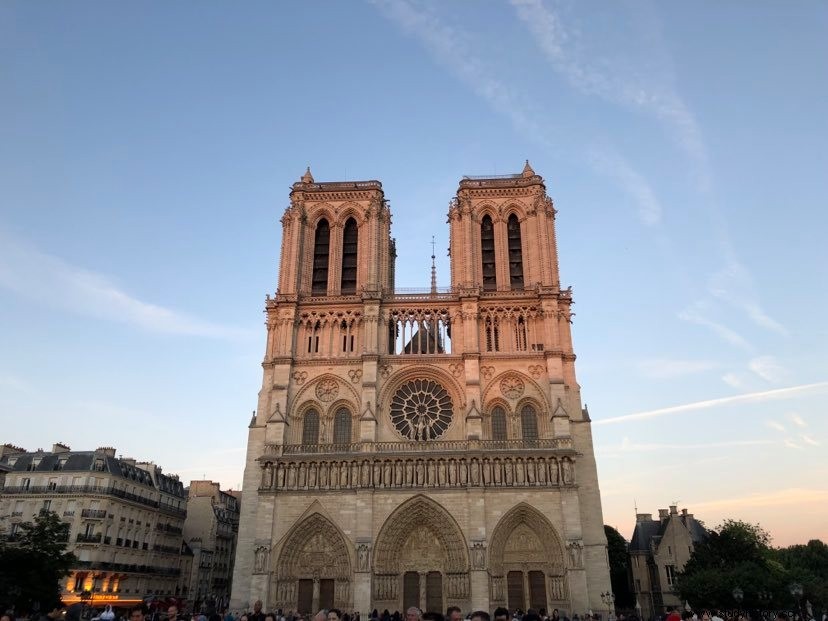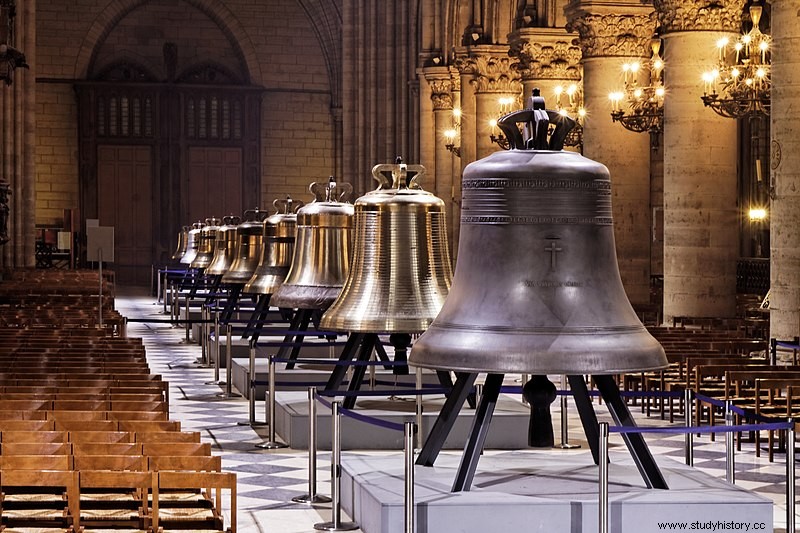
On April 15, we celebrated the sad anniversary of the fire that damaged Notre-Dame de Paris. Héritages wanted to return this time to its construction to pay it a new tribute. A jewel of our heritage and of Gothic architecture, the complexity of its construction, the cradle of great technical innovations spanning almost two centuries, is an integral part of its history.
On the Ile de la Cité, its location is symbolic. Indeed, since Antiquity it is in this precise place that cults are already held, first pagan then Christian. It was therefore natural that in the Middle Ages this location was chosen to erect a church there. When the kings of France took up residence at the Palais de la Cité, church and cathedral followed one another on the famous location.
In 1160, Maurice Sully, having won the trust of the royal family, became the powerful bishop of Paris during the reign of Louis VII. He wants to replace the Saint-Etienne cathedral which has become too small for the faithful. But this project is also indicative of the audacity of the bishop because, instead of simply asking for renovations to enlarge the cathedral, he chose to have it destroyed so that the new one would be grandiose. He dreamed, in fact, of a "heavenly palace", wanting it at least equal or superior to the Temple of Solomon as described by John in The Apocalypse . The canons, members of the clergy who administer the bishopric with authority, oppose his project. It finally sees the light of day thanks to the support of the king.
In 1161 Bishop Sully chose the exact location of the Parvis, imagining the feeling of admiration that the grandeur of the monument would arouse among the faithful. He also wanted to simplify access to the cathedral and redesigned the urban plan around it. Construction can begin. Between 1160 and 1170 the first trees were felled to build the structure of the building. This frame is called "the Forest", because each of its beams is made from a different oak, some are moreover centenarians (oaks of the VIII th or IX th century), it's good wood! In 1163 Pope Alexander III, with King Louis VII and Maurice Sully, laid the first stone of the building. The construction is done systematically from the foundations to the roof, for all stages, which allows from 1182 that a first part of the cathedral is completed. Including the choir and the beginning of the transept, the faithful can already come and celebrate mass there.

The lead roof tiles are laid by the best roofers then nicknamed "cats", because they carry out their work forty-five meters above the ground. You can admire the flying buttresses already present, so dear to Notre-Dame, continuing the architectural prowess of their time. Comes the time of the installation of the vaults, essential passage of the works. The stone blocks must be laid one by one and the most crucial moment is when the keystone is laid because everything threatens to collapse. The builders face several failures before finally achieving a great achievement.
Bishop Sully died in 1196 and, without him, the master builders did not know how to continue the work, which was then greatly slowed down. It is necessary to wait until 1200 for the second phase of the work to start in practice. Stylistic evolutions are felt in the continuation of the construction site, the choir is extended by a nave and the facade takes shape. major liturgy. The central portal, in particular, represents the Last Judgment. In the Middle Ages it was important for cathedrals to give a good image of the Bible to make it readable to believers, many of whom did not know how to read. The canons then wanted to have the portraits of twenty-eight kings carved above the portals. Each king represents a month of work for the image makers, but this laborious work is worth the splendor of the gallery of kings. The kings and the facade are then entirely painted, the cathedral is flamboyant with colors.

In 1219, the builders were greatly concerned that problems caused to Notre-Dame by the unfortunate infiltrations of water of which it is the victim at the slightest rain or overflow of the Seine. Its maintenance is greatly threatened because the stones are eaten away. The stonemasons then had a genius idea:dig gutters in the flying buttresses and carve gargoyles at their ends so that they “spit” the water away from the walls. Otherwise, gargoyles are also added on both sides of the cathedral. But why represent monstrous animals? On the symbolic side, the interpretation retained is their role of protecting the cathedral against demons and sinners, as if they were its guardians.
To achieve the desired result of the water drainage system, the builders had to dismantle the roof and the Forest, to raise the walls by two meters; the flying buttresses are rebuilt. The Forest can then be reassembled and the original spire is erected, we are around 1230. The stones of the walls are recut to enlarge the windows which were small, and thus let in more light. The two towers can finally be raised and the cathedral exceeds the royal palace, opposite it at the end of the Ile de la Cité. She takes the form we know her.
Damask roses imported from the Orient inspired Jean de Chelles, who designed the magnificent rose windows of Notre-Dame. He called on new builders to carry out his project because the facades of the transept had to be completely rebuilt and, for the stained glass windows of the rose window, he contacted the glassmaker of the Sainte-Chapelle. True symbols of Gothic art, these colossal works are thirteen meters in diameter. The North rose window of Notre-Dame is dedicated to the Old Testament, while the South rose window, commissioned by King Saint-Louis, is dedicated to the New Testament. Their particularly delicate creation leaves artisans no respite. The rosettes are very fragile and their installation causes a lot of damage. It is one of the greatest achievements of Gothic art.
In 1270 the bronze bells finally went up. The heaviest weigh up to ten tons and the lightest 500 kg. The latter are affectionately nicknamed “sparrows”. However, it is impossible to ring them in towers without risking breaking them. So, a wooden belfry must be built in the towers so that it absorbs the swinging of the bells and preserves the walls of the towers of Notre-Dame without coming into contact with them. The cathedral was then a century old and would still be pampered throughout the 14th th and XV th centuries.
But that was without counting on the Renaissance which made its appearance in France in the 16 th century, hitting the reputation of the cathedral hard. While she had launched the wave Opus Francigenum , “the French work” which radiated in parallel with its construction, reflecting on churches and cathedrals in Europe, its style became the laughing stock of architectural art. The revival expressed by the castles of the Loire overshadows our beautiful cathedral and the glory of its architecture is reduced to nothing. It is the barbaric qualification of its style that gives rise to the term "Gothic".
After all this progress, the cathedral still has a few adventures to live:the many damages inflicted on it by the French Revolution to erase the traces of the monarchy; the coronation of Napoleon which it hosted in 1804; Victor Hugo's novel restoring her posterity in 1831 and narrowly saving her from ruin; its restoration that we owe to the architects Viollet-le-Duc and Jean-Baptiste Lassus, as well as to the sculptor of the twelve statues of the apostles and the rooster surmounting the spire, Adolphe-Victor Geoffroy-Dechaume (and Victor Hugo, indirectly) . My heart aches when I think of Bishop Sully, the father of the cathedral, who will never have been able to see it finished even though he was its most fervent defender, carrying the project against all odds. But I also think of all those men, builders, craftsmen, companions, who will have devoted their lives to it and put their know-how at the service of the site. Finally, I have a special thought for the oaks that made up the formidable framework, the Forest, which went up in smoke in the fire.





